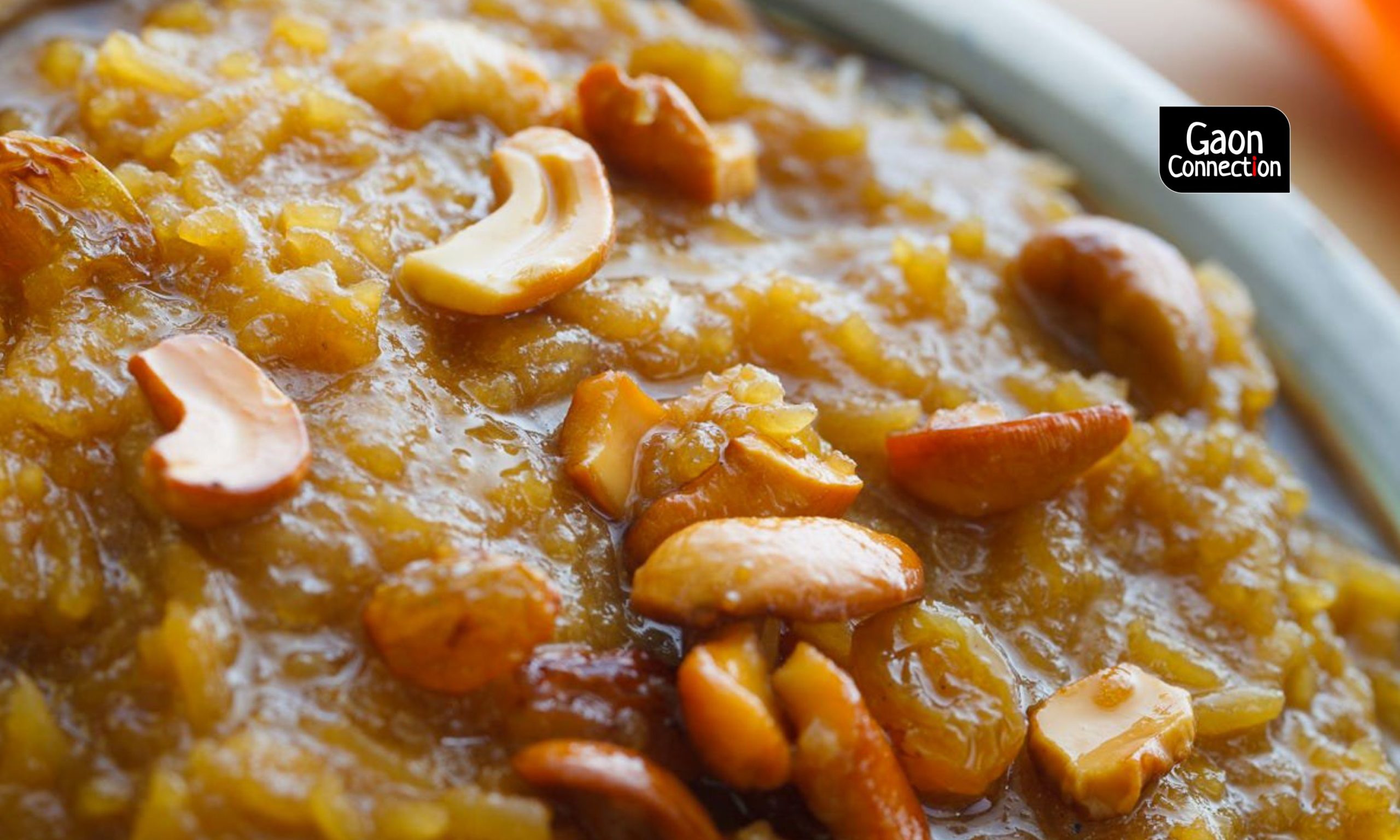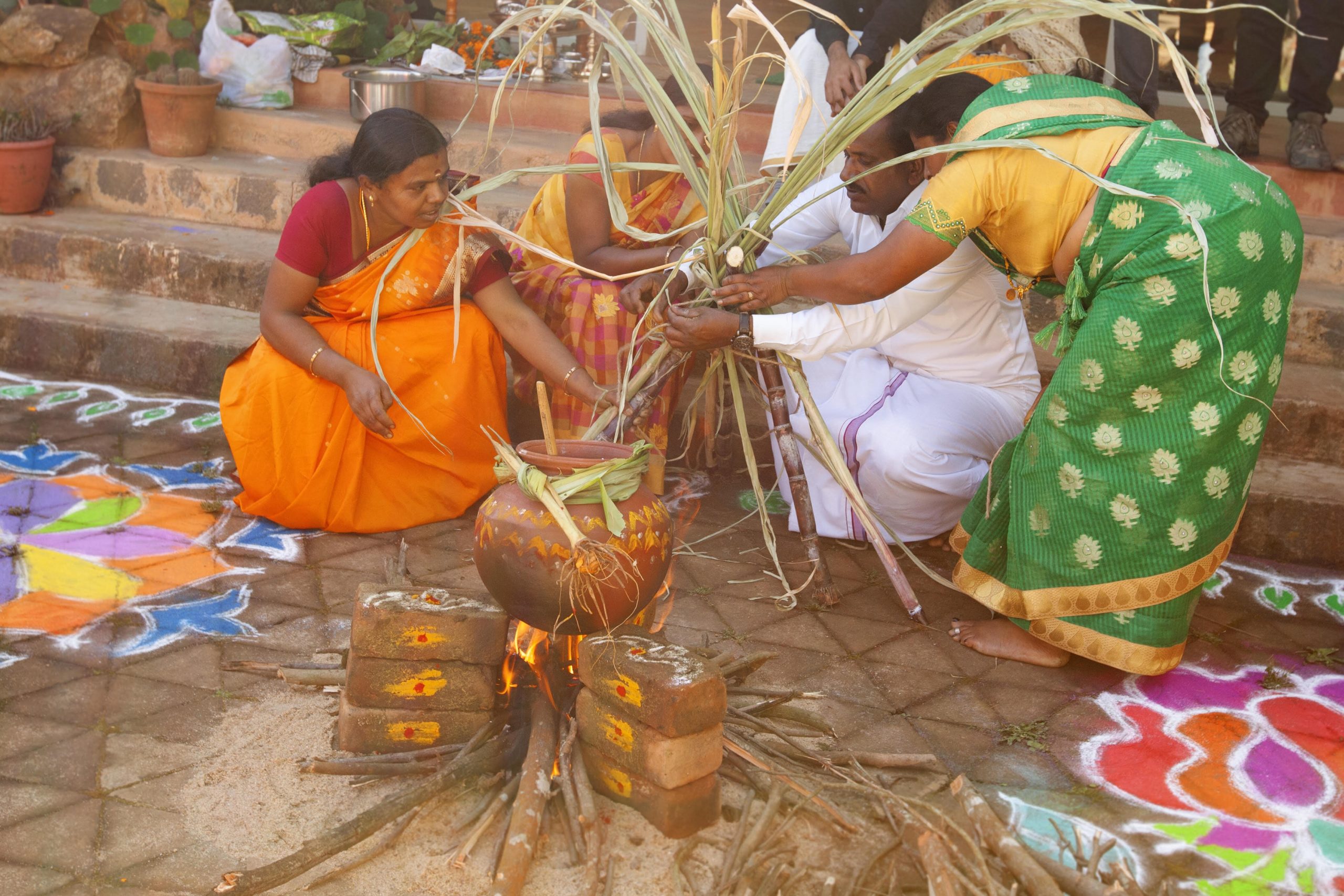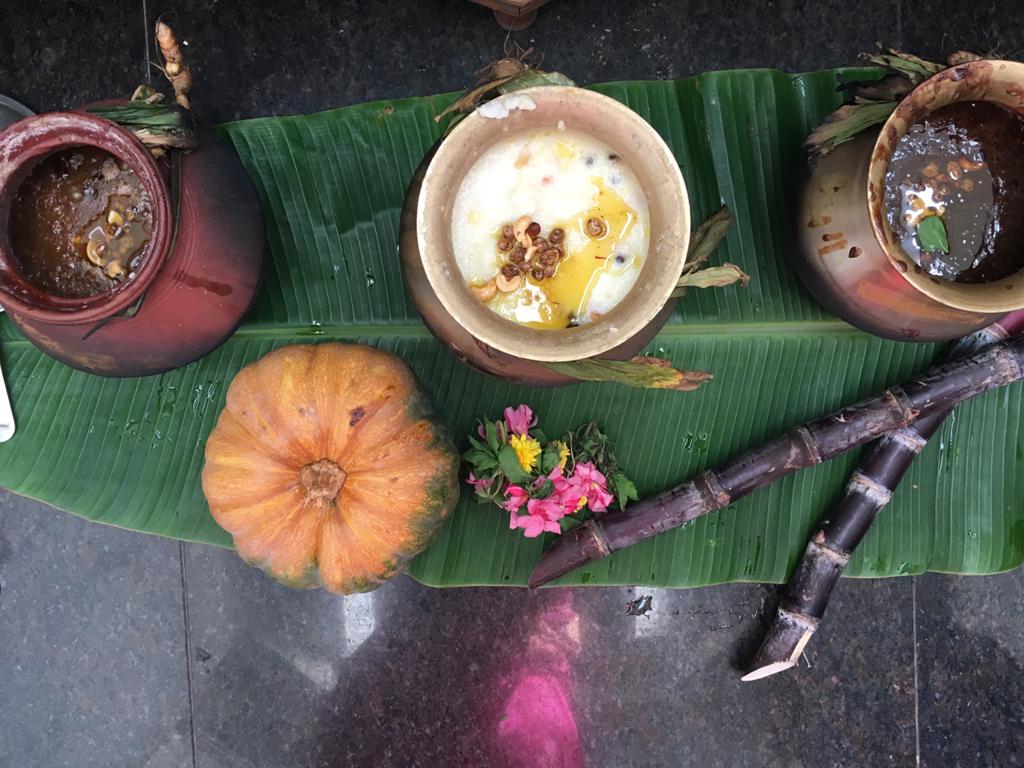Pongal O Pongal: Add sweetness to your day with this traditional Pongal speciality
Households across Tamil Nadu prepare to cook sakkarai pongal as a thanksgiving to the farmers who put food on our plates. You can make it too with a few staple ingredients that you are sure to have in your kitchens.


Photo: @sweetkadai
Coimbatore, Tamil Nadu
In homes across Tamil Nadu and in the other south Indian states as well, kitchens are stocked with yellow moong dal, rice, quantities of jaggery and ghee (clarified butter) — basic staples that every farmer household will have in its kitchen too. These are used to cook the sakkarai pongal, a nutritious, hearty offering to give thanks and celebrate a successful harvest.
On January 14, in many households, a big pot, preferably in earthenware, will be decorated with dots of vermillion and turmeric powder. Around the mouth of the vessel will be tied raw turmeric rhizome with their leaves intact — an important component of the Pongal ritual, as with its antibacterial properties, turmeric signifies a disease-free, healthy year ahead.
A few pieces of sugarcane will be tagged on to the sides along with a couple of bananas… and the rice, dal and jaggery are kept in readiness. There are dry fruits fried in ghee waiting to be used, cardamom is powdered, and saffron taken out of its precious container, if one is feeling expansive.
Making sakkarai pongal has been a part and parcel of my life for as long as I can remember it. Along the way, I took shortcuts, discarded rituals of tying sugarcane and raw turmeric around the vessel, or decorating it… till I came back to Tamil Nadu, put down roots in Coimbatore where friends still have strong rural ties, and where I learnt so much more about farmers, farming, harvests and cattle.

One enduring childhood memory is of my grandmother serving this luscious dessert in a silver bowl, dark brown and glistening, with fat cashew nuts fried to a golden brown on top. I can still remember the heady aroma of ghee, cardamom and jaggery filling every corner of my grandmom’s home.
In the villages, sometimes, there are usually three decorated clay pots or vengala paanai (bronze vessels usually handed down generations) that are positioned facing the east. One will hold an offering to the sun god who is making his northward journey, ending the cold winter days and ushering in warmth; the second one is to propitiate lord Ganesha believed to remove all obstacles, and the third pot is offered to the village deity.
Somewhere a week before the festival, the elders in the family start looking up the auspicious time to ‘keep’ the pongal. At the appointed hour (as dictated by the panchangam or the Hindu almanac) water in which rice has been washed is poured into the pots with a little raw milk and placed on a wood-fire. The momentum and anticipation builds up as the water and milk mixture starts bubbling and frothing and begins to rise up. Then, with a hiss, the mixture flows right out of the pot and cheers of Pongal O Pongal go up loudly.

The overflowing pot represents a plentiful and bountiful harvest. Half the water is then decanted and three fistsful of the just-harvested rice are added to each pot. More rice is added along the way with the dal and allowed to cook well followed by jaggery and ghee. The powdered cardamom, the cashew and raisins that have been fried in ghee are put in, the mixture thickens, is taken off the fire, it is topped with a generous helping of ghee and the beautiful, shiny dark brown sakkarai pongal is distributed on banana leaves to the gathering of villagers who eat it with heartfelt gratitude for the good harvest.
In urban homes, the same sakkarai pongal is made and savoured. It is a time to remember the farmers with gratitude for putting food on their plates.
It is also a time to celebrate indigenous grains and produce and bring back the smells and tastes of a time that was slower, more meaningful and joyous, and which at every turn acknowledged the pivotal role farmers played in our survival.
Recipe: Sakkarai Pongal

I now make the sakkarai pongal in a pressure cooker (despicable me!). And here’s how.
Ingredients:
Rice: One cup (preferably a non-fragrant rice)
Broken yellow moong dal: half cup
Jaggery: One cup (this is debatable, as some like it much sweeter so they lay on the jaggery)
Green cardamom: A couple powdered
Cashew nuts and raisins: The more, the merrier, fried in ghee
Ghee: three fourths cup (you are welcome to add more)
A few strands of saffron dissolved in milk (optional)
Milk: Half cup
Procedure:
- Wash the rice and moong dal well. Put it in the cooker with four cups of water and cook till nicely done. You could also cook it in an open vessel/pot and keep a careful eye on it
- Meanwhile, fry the dry fruits in ghee and keep aside, along with the powdered cardamom
- Dissolve the jaggery in a little water, and sieve to eliminate any grit
- When the rice/dal mixture is cooked well, add the jaggery solution to it, mix well and allow to simmer for a while. Ensure the raw taste of the jaggery goes.
- As the mixture begins to boil and plop, add the dry fruits, the saffron and the cardamom. Turn off the heat, add milk and mix well.
- Portion the sakkarai pongal into squares of banana leaves, or your prettiest dessert bowls, drizzle more ghee on top and it is ready to eat.
(The piping hot sakkarai pongal also tastes great with scoops of vanilla ice cream)
Just so one remembers, the sweet also comes with the salty experiences in life, many families also make the ven pongal or the savoury version. Barring the jaggery, cardamom and the saffron, everything else remains the same as the sweet pongal.
The savoury pongal is served usually with seasonal vegetables such as red pumpkin, broad beans and greens.

Recipe: Ven Pongal
Ingredients:
- Rice: One cup (preferably a non-fragrant rice)
- Broken yellow moong dal: half cup
- Whole Black pepper: five or six
- Cumin seeds: half teaspoon
- Cashew nuts: A couple of tablespoons or more
- Ghee: A cupful at least
- Salt to taste

Procedure:
- Boil the rice and dal together with enough water to cook them well but not too mushy. Add salt to taste.
- In a pan melt the ghee and one it is hot enough add the pepper roughly pounded along with the cumin
- Add the cashews and fry till they are a golden brown
- Pour the ghee with all its fragrant contents on to the rice and dal mixture, mix well and it is ready to eat.

